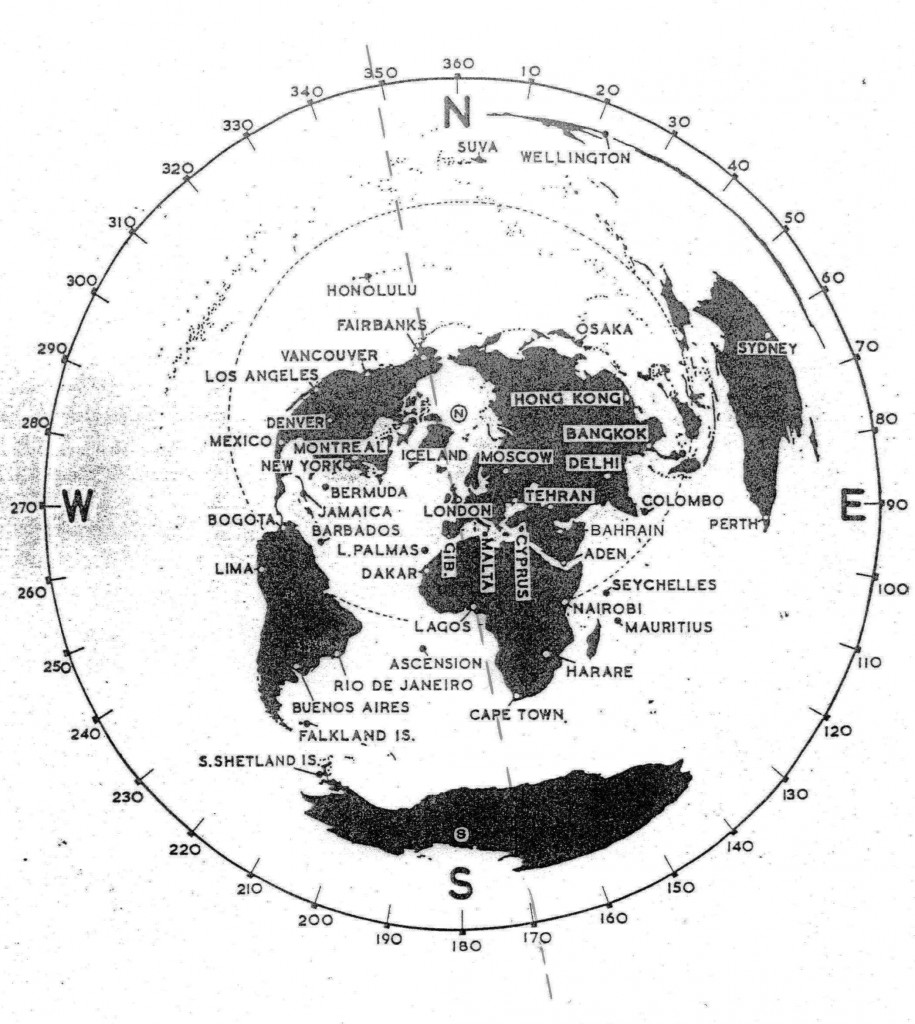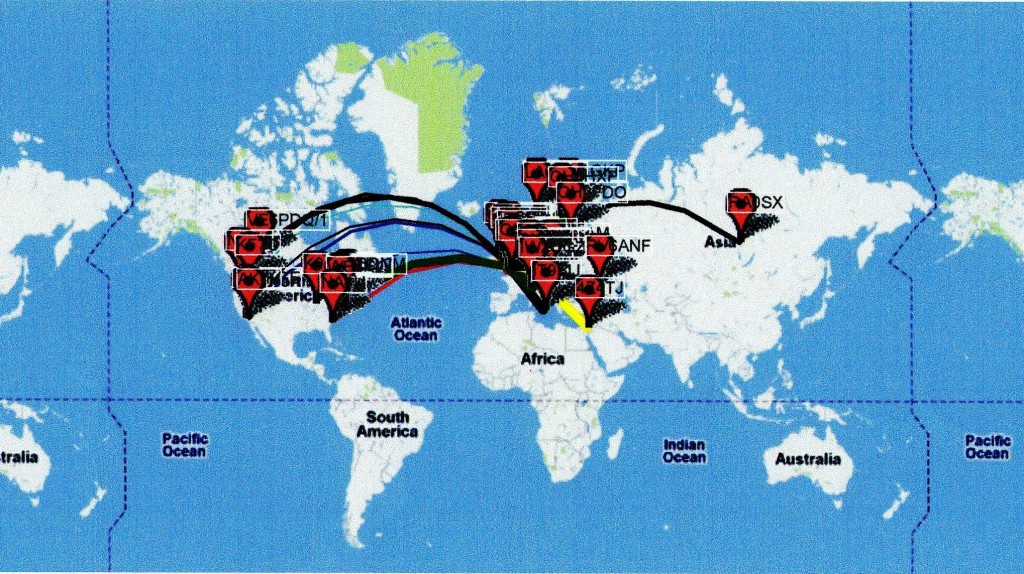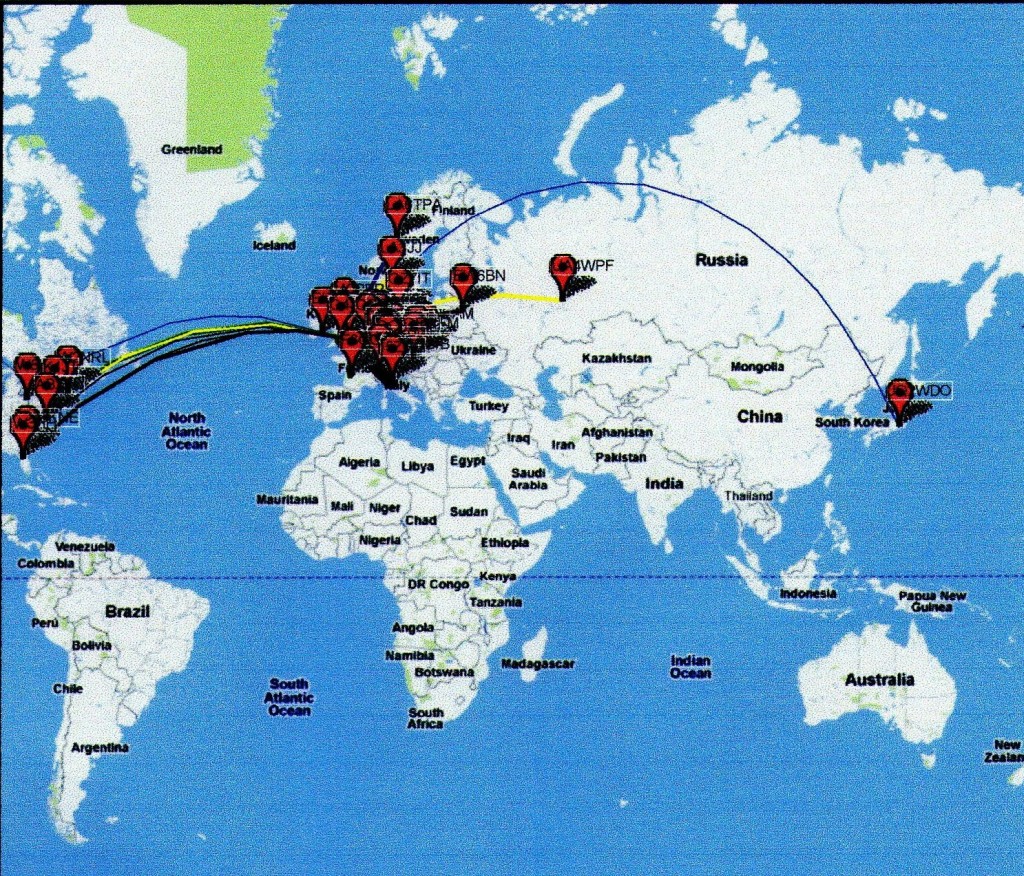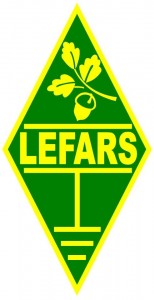The situation
I have for some time had a suspicion that my aerial, a 60’ doublet, fires my RF in an east – west direction. The aerial lies in a plane north – south at about 25’ at one end and 50’ at the other.
I do not have much of a problem working into the south east coast of the USA and the Caribbean or Scandinavia (who exhibit very strong signals at my QTH). I do occasionally work into Australia and the Far East but conditions need to be very good to do so.
Since installing a program called Weak Signal Propagation Reporter (WSPR), courtesy of Derek M0XDC, I have always decided to do some tests tomorrow! I have finally got around to doing so, especially as conditions are now on the up and there is good DX to be found.
The dotted line indicates the lay of my aerial.
Existing aerial tests
A look at the great circle map shows the lay of the aerial and the direction it propagates the RF, i.e. east – west. Working stations south of the Sahara, down to South Africa is very rare as far as I am concerned. However working into South America is not too difficult.
20m. north – south over 12hr period November 2011
30m. north-south over 12hr period November 2011
As can be seen there is not a great deal of difference between the bands. There is DX to be worked, or at least DX data to be received and sent.
New aerial tests
The propagation maps and the associated data have confirmed that which I suspected. The other bands were checked and yielded a similar result.
A solution may be to erect an aerial in the east -west plane if there was enough room in the loft. A careful measurement and calculation then took place and showed that a doublet cut for 20m and above would JUST fit into the loft space in and east – west direction. An afternoon of crawling about a dirty loft space, feeding coax into the shack and fitting the wire across the rafters did produce an aerial. Over a period of days and weeks I have conducted a series of tests using WSPR for 8 – 12hr periods.
I can now switch between aerials and see the difference in signals or not as the case may be. Some rather odd phenomena was observed to which I no real explanation. Perhaps the wind was in the wrong direction!
20m. east-west.12hr period week 1/November 2011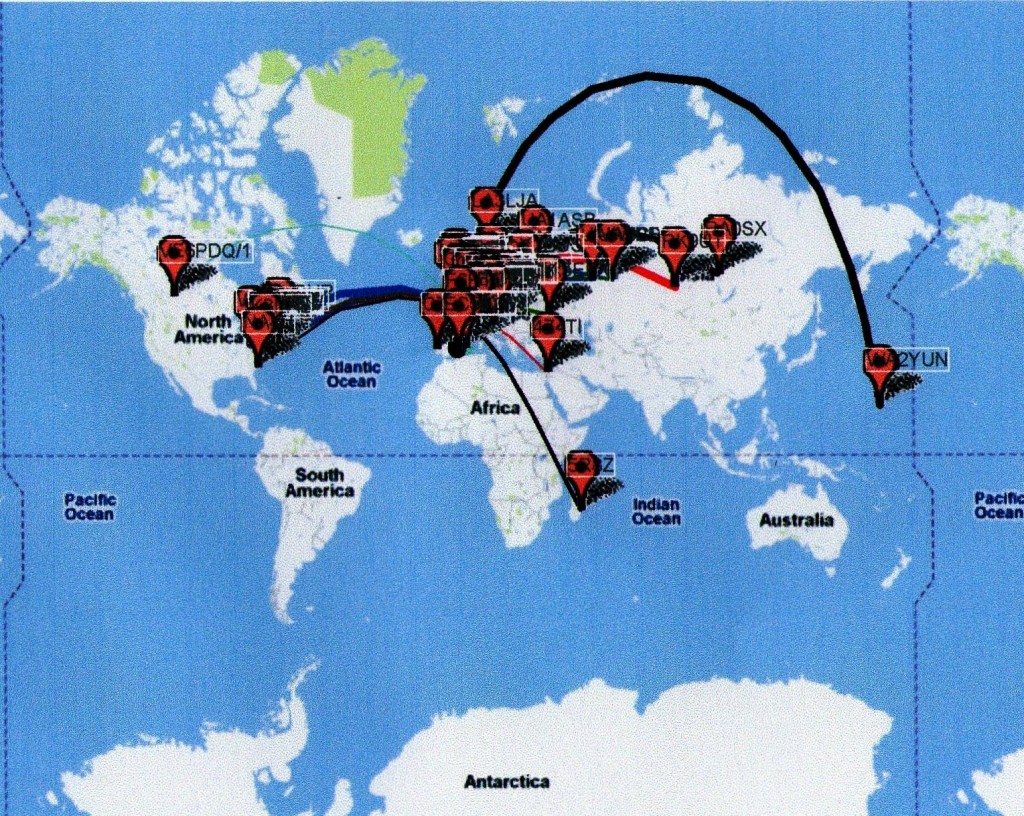
The first observation is the signal from WA2YUN on Wake Is, part of Hawaii group. This is the first time ever I have received a signal from this area of the pacific, one can’t get much further. The other one is the report from Madagascar, a rare area for me.
20m. east-west 12HR Week 2/November 2011
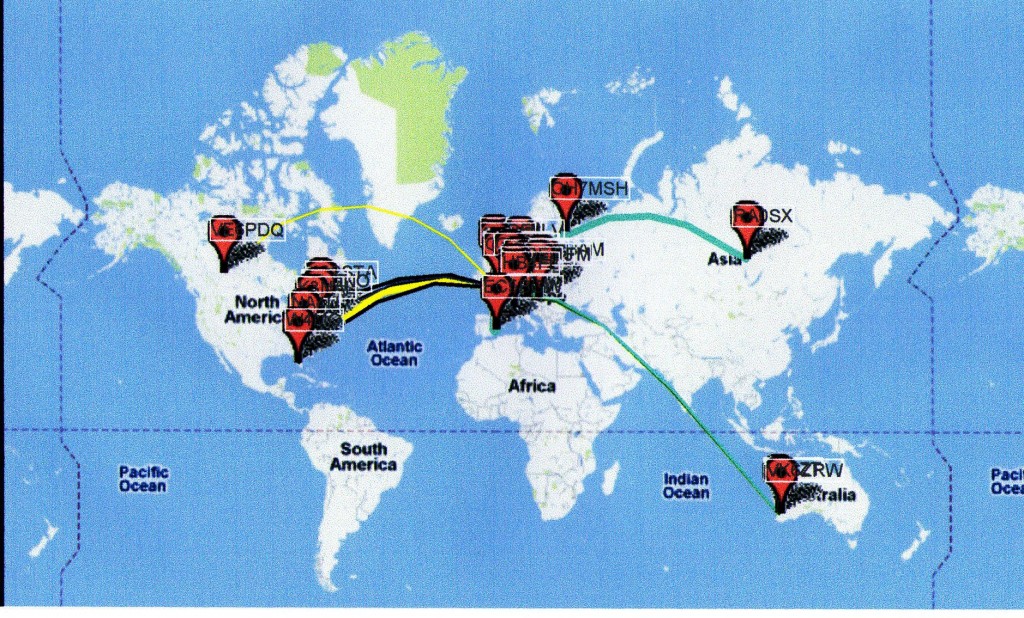 This is the picture on 20m using the E-W aerial over a 12hr period on week 2 of the tests. As can be seen there appears to be almost global coverage over the northern hemisphere. The southern hemisphere does not seem to be very active on WSPR! I have no idea why this should be; perhaps I was listening on WSPR at the wrong time.
This is the picture on 20m using the E-W aerial over a 12hr period on week 2 of the tests. As can be seen there appears to be almost global coverage over the northern hemisphere. The southern hemisphere does not seem to be very active on WSPR! I have no idea why this should be; perhaps I was listening on WSPR at the wrong time.
However on SSB and DATA modes, stations in the southern hemisphere were certainly active and I worked quite a few, mainly in South America. One of the least active areas for me is the mid to southern part of Africa. Few stations are ever heard by me in this part of the world. I have worked South Africa on occasions, but most African stations I work are north of the Sahara. Hopefully over a period of time I will be able to winkle out these stations on the E/W aerial.
The test parameters
The tests were carried out, using the normal home station equipment and was as follows…
Tx/Rx: Yaesu 847 transceiver
Main aerial: 60’ doublet at a height of 25’ (house end) to 50’ (tree end). Direction N-S
Secondary aerial : 30’ doublet in the loft space Direction E-W.
Power levels:
WSPR 10W
SSB 100W
DATA 25W
Evaluations and Observations
The ability to be able to switch between two different aerials has already shown that it was a good investment. It is now possible to null out interference from adjacent stations and in some cases increase the relative strength of received signals.
Bearing mind that the two aerials are not equal in length or height it is not possible to evaluate them equally in any scientific way. What is noticeable is that direction is important on some of the signals. However on most of the tests the main direction is still east – west on most HF bands. The transmitted signal from me does appear to fire in either north – south or east – west, as the maps show. I now seem to be able to work into Australasia more easily that before. I suspect this is a combination of improved aerials at my end and good conditions. I am now hearing much more than I can easily work.
I have noticed that there is a strange phenomena cropping up occasionally, especially on 20m, but also on other HF bands. Whilst using the E-W aerial I have heard the HF echo on a number of stations in Europe and some US stations. A distinct echo is heard from some of the northern Italian station but not all. Also east coast US station have had a similar echo when working to JA and VK. A similar phenomenon occurs with some very northern LA and SM stations.
I am obviously receiving short and long path, and I notice that this occurs when these stations are using beams and are beaming away from me, i.e. over the poles or long path east or west. It is noticeable that when these stations move their beam heading the echo disappears. I have not noticed this as yet on the N-S aerial.
Another strange phenomenon has been noted in that the direction of received stations varies even if they are using fixed aerials and are in the same city or area. Sometimes the same stations are stronger in different directions at different times of the day, even as little as an hour.
How much of all this is due to my improved aerials or uplift in HF conditions is as yet unknown, probably a bit of both, however the next few years will tell. It does look as though cycle 24 has at last arrived and I read that it will be at its maximum in 2013!
And finally………
You’ve got a licence, a rig; make an aerial, go play. Good DX.
73
John G0VEH (Email: g0veh@lefars.org.uk)
Further information on WSPR
main WSPR site (documentation and downloads) here
live WSPR data here

